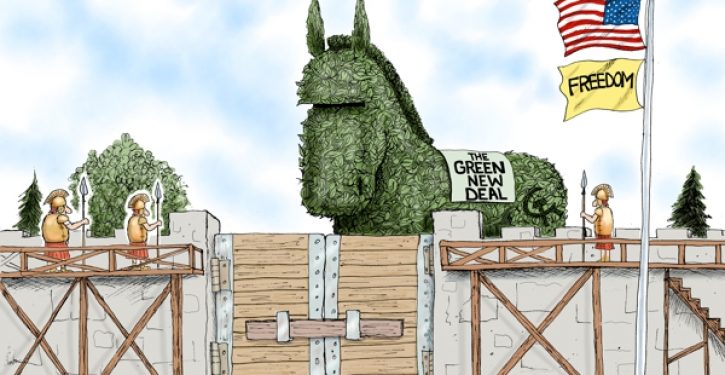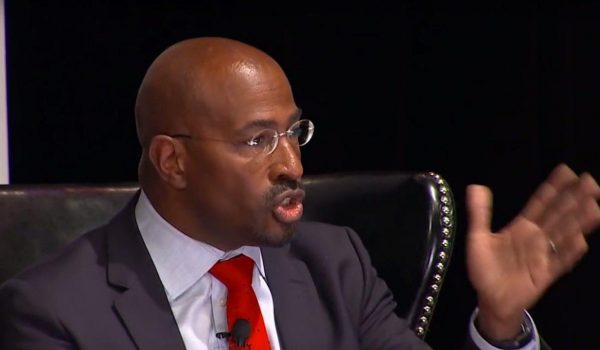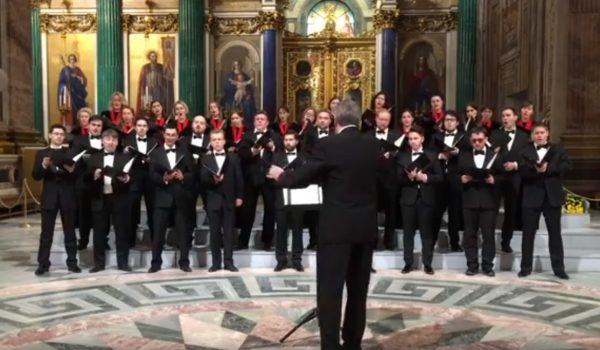
Attempts to reduce America’s dependence on fossil fuels face an unfortunate political reality: government officials often squelch solar power, even where it makes perfect sense economically. California’s San Bernardino County would seem to be a prime location to generate solar power, since it is a sunny, 20,000 square-mile area of mostly desert. But local officials are blocking solar and wind farms there anyway, reports the Los Angeles Times:
California’s largest county has banned the construction of large solar and wind farms on more than 1 million acres of private land, bending to the will of residents who say they don’t want renewable energy projects industrializing their rural desert communities northeast of Los Angeles.
Thursday’s 4-1 vote by San Bernardino County’s Board of Supervisors highlighted a challenge California could face as it seeks to eliminate the burning of planet-warming fossil fuels.
State lawmakers passed a bill last year requiring utility companies to get 60% of their electricity from renewable sources by 2030, and 100% from climate-friendly sources by 2045. But achieving those goals will require cooperation from local governments — and big solar and wind farms, like many infrastructure projects, are often unpopular at the local level.
In Virginia, too, activists have succeeded in getting government officials to delay a solar farm — a large facility in Spotsylvania County that would have generated lots of renewable energy. Ironically, they are using tactics pioneered by environmentalists to block energy and industrial projects, notes James Bacon at Bacon’s Rebellion:
Environmentalists have created a monster. They have engendered a climate of hysteria by hyping risks for everything from…water quality to environmental racism. They have mastered the art of throwing every conceivable objection against the wall to see what sticks. They have perfected the strategy of question, question, delay, delay, obstruct, obstruct, sue, sue. Now, in the Spotsylvania County controversy over a solar farm, their tactics are biting them in the hindquarters…the Spotsylvania Board of Supervisors delayed yesterday a decision on whether a 500-megawatt solar facility will be built in the western part of the county.
A large majority of the hundreds of people packing the Spotsylvania County auditorium opposed the sPower project, which would be the largest east of the Rocky Mountains and would almost double the amount of solar energy Virginia is currently producing. The concerns expressed seem utterly without merit… “How much poison does it take to cause cancer?” [a citizen] asked the supervisors in the first of several impassioned speeches, alluding to sPower’s plans to use cadmium telluride panels for about 30 percent of its installation. The opposition has claimed that cadmium telluride poses a threat to human health if it leaches into water sources.
The fear of cadmium telluride seems especially misplaced. The chances of cadmium, a heavy metal, leaking into the groundwater are nil, even in the event of breakage or melting in a fire….The fear of cadmium leaching is irrational. But the fear of heavy metal contamination of groundwater has been stoked by environmentalists who have insisted that Dominion Energy spend an additional $1 billion or more to move coal ash to synthetically lined landfills with no consideration to the minimal risks posed by the EPA-approved solution Dominion originally proposed. The risks associated with solar panels appears to be even more miniscule than with coal ash, but Virginians have been conditioned to believe that “toxic” metals are dangerous, they are oblivious to the concept that there might be acceptable levels of risk, and they don’t want to be those metals anywhere near them.
Democratic presidential candidates such as Bernie Sanders, Cory Booker, Elizabeth Warren, and Kamala Harris are backing the “Green New Deal. It would cost at least $50 trillion, and perhaps over $90 trillion — four times the size of America’s economy, and four times our country’s current national debt.
But would it even succeed in increasing renewable energy production much, if solar farms can’t be set up even in prime locations such as California’s San Bernardino County, due to factors such as America’s NIMBY mindset, litigiousness, and land-use regulations?
As we noted earlier, the Green New Deal would pay for a vast array of new construction projects, many of them pointless white elephants. As Joel Pollak notes, the Green New Deal proposes “‘upgrading all existing buildings in the United States.’” In many cases (such as where buildings are approaching the end of their lifespan), that would consume more energy than it would save.
Quoted in The New York Times, Thomas J. Pyle of the Institute for Energy Research said this construction activity would lead to lots of new greenhouse gas emissions and pollution: “How much steel is this going to involve? How much concrete? Think about the sheer amount of CO2 emitted into the atmosphere for retrofitting alone,” he said. “It’s almost as if they are suspending reality.”
Writing in Forbes, Michael Shellenberger says the Green New Deal would “increase emissions” of greenhouse gases by shutting down nuclear plants, which emit no carbon dioxide while operating.
The Green New Deal would also shrink the economy by discouraging people from working, leaving the government with less money to finance renewable energy projects. The original “Green New Deal” blueprint expressly provided “economic security” — that is, welfare benefits — “for all” Americans who are “unwilling to work.” Encouraging people not to work will lead to less income tax revenue and increased government welfare spending. That will increase the federal budget deficit and leave it with less money for promoting clean energy.



